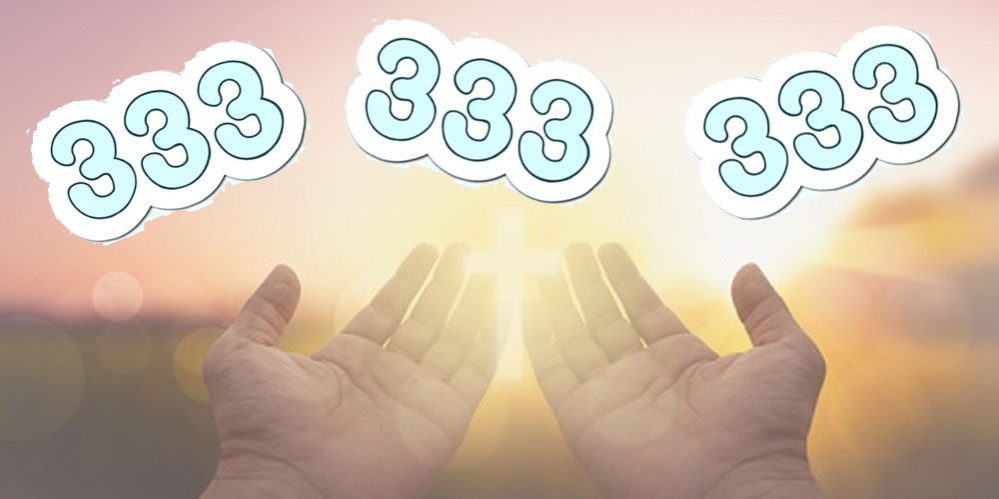Embracing the Depths of Emotion In the vast tapestry of human emotions, there exists a shade that is often overlooked but holds significant meaning – feeling blue.
This poignant emotional state, characterized by sadness, melancholy, or a general sense of gloominess, has been experienced by countless individuals throughout history. The phrase “feeling blue” itself has become synonymous with moments of introspection, reflection, and sometimes even despair.
Definition of Feeling Blue
When we talk about feeling blue, we are referring to a complex emotional state that goes beyond mere temporary sadness. It encompasses a range of emotions such as sorrow, loneliness, and melancholy.
Feeling blue is not solely limited to being downcast or experiencing moments of sorrow; it can also manifest as a deep-seated sense of longing or nostalgia for something lost or unattainable. It’s important to remember that feeling blue is an inherent part of the human experience.
It can be considered a natural response to life’s inevitable challenges and disappointments. While society often encourages us to be relentlessly positive and upbeat at all times, embracing our blues can lead to greater self-awareness and personal growth.
Importance of Understanding and Addressing this Emotion
Understanding feeling blue is crucial in navigating our emotional landscapes effectively. By acknowledging and validating this emotion within ourselves and others, we create an environment that fosters empathy and compassion. Instead of dismissing these feelings as mere mood swings or passing whimsy, recognizing the significance of feeling blue enables us to offer support and understanding when someone around us is going through a tough time.
Furthermore, disregarding or suppressing feelings of sadness can have detrimental effects on our mental well-being. When left unaddressed for extended periods, feeling blue can escalate into more severe conditions such as depression or anxiety.
By learning to recognize and process this emotion, we gain the ability to take proactive steps toward healing and balance. In the following sections of this article, we will delve deeper into the various causes and psychological effects of feeling blue.
We will examine how external factors such as relationship issues or major life changes can contribute to these emotions. Additionally, we will explore internal factors like brain chemistry and personality traits that influence our susceptibility to feeling blue.
Through a comprehensive understanding of these elements, we can begin to uncover effective coping mechanisms and strategies for addressing this emotional state head-on. So, dear reader, let us journey together through the intricate labyrinth of feeling blue, gaining insights that will empower us to embrace our emotions fully and live more authentic lives.
Understanding the Emotional Spectrum
Overview of emotions and their impact on mental well-being
Emotions are an integral part of the human experience, shaping our perceptions and influencing our actions. They play a crucial role in our mental well-being, affecting everything from our relationships to our overall happiness. The emotional spectrum encompasses a wide range of feelings, each with its unique characteristics and effects on our psyche.
At one end of the spectrum, we have positive emotions such as joy, excitement, and contentment. These emotions bring about a sense of fulfillment and pleasure, enhancing our overall well-being.
When we experience positive emotions, we tend to be more optimistic, resilient, and open to new experiences. They provide us with the energy needed to tackle challenges and navigate through life’s ups and downs.
On the other end of the spectrum lie negative emotions like sadness, anger, and fear. While these emotions may appear undesirable at first glance, they serve an important purpose in our lives.
Negative emotions can act as warning signs that something is amiss or needs attention. They help us process difficult situations or losses by allowing us to grieve or reflect upon them.
Explanation of feeling blue as a common emotional state
Feeling blue is a phrase commonly used to describe a state of sadness or melancholy that many people experience at some point in their lives. It is a natural part of being human and does not necessarily indicate any underlying mental health condition.
Feeling blue can manifest in various ways for different individuals. Some may experience it as mild bouts of sadness that come and go without much disruption to daily life activities.
Others may find themselves deeply affected by this emotion for extended periods. It’s important to note that feeling blue is distinct from clinical depression but can sometimes be a precursor or one aspect of it.
While feeling blue may be transient or situational – often triggered by specific events like a breakup, loss, or disappointment – depression is characterized by a persistent feeling of sadness and lack of interest in activities. Despite its temporary nature, feeling blue should not be dismissed or trivialized.
It is essential to acknowledge and address these emotions when they arise, as they can impact our overall well-being and quality of life. By understanding the emotional spectrum and recognizing the common experience of feeling blue, we can begin to explore strategies for coping with this state and finding ways to navigate through it.
Causes of Feeling Blue
Feeling blue is a complex emotional state that can be triggered by various internal and external factors. It’s important to recognize and understand these causes to address and navigate through this challenging emotion. Let’s delve into the different sources of feeling blue, both external and internal, that can contribute to its onset.
External Factors:
Relationship issues and heartbreaks: Ah, matters of the heart! Love can bring immense joy, but it can also be a source of profound sadness.
Whether it’s a breakup, divorce, or unrequited love, relationship issues and heartbreaks can leave us feeling devastated. The loss of emotional connection with someone we cared deeply for can create a deep void within us.
Loss or grief experienced in life: Losing a loved one is undoubtedly one of the most challenging experiences we face. The grieving process involves intense emotions such as sadness, longing, and emptiness.
It takes time to heal from such losses, as we grapple with the absence of someone who held great significance in our lives. Stressful events or major life changes: Life has its ups and downs—sometimes more downs than ups!
Stressful events like financial struggles, job loss, or moving to a new city can overwhelm us emotionally. These significant life changes disrupt our sense of stability and security, triggering feelings of uncertainty and unease.
Internal Factors:
Chemical imbalances in the brain affecting mood: Our brain chemistry plays an influential role in regulating our emotions. Some individuals may have naturally occurring chemical imbalances that impact their mood regulation systems. This can lead to periods of prolonged sadness or feeling blue without any apparent external triggers.
Personality traits that make individuals prone to sadness: We all have unique personality traits that shape how we perceive and respond to the world around us. Some people naturally lean towards a more melancholic temperament, making them more prone to feeling blue.
Factors such as introversion, sensitivity, or a predisposition to rumination can contribute to this inclination. Understanding the causes of feeling blue helps us realize that it is a natural response to various circumstances in life.
Whether it stems from external factors like relationship struggles or internal factors like brain chemistry, it’s important not to blame ourselves for experiencing this emotion. In the next section, we will explore the psychological effects of feeling blue and its impact on mental health.
Psychological Effects of Feeling Blue
Negative Impact on Mental Health
Feeling blue can take a toll on our mental well-being, leading to negative consequences that should not be ignored. One significant risk associated with this emotional state is an increased vulnerability to depression and anxiety disorders. When feeling blue persists for an extended period, it can potentially spiral into a deeper depressive state, making it crucial to address these emotions before they manifest as more severe mental health issues.
In addition to the heightened risk of depression and anxiety disorders, feeling blue can also impair our cognitive abilities. It’s no surprise that when we’re in a low mood, concentrating becomes an arduous task.
Our ability to focus dwindles, making even the simplest decisions feel overwhelming. This foggy state of mind can interfere with our daily activities and productivity levels, further exacerbating the emotional distress we experience.
Positive Aspects
However, it is important to note that feeling blue isn’t all doom and gloom; some positive aspects emerge from this emotional state. One such benefit is enhanced empathy towards others’ emotions. When we experience sadness ourselves, we are often more attuned to the feelings of those around us.
This heightened sensitivity allows us to provide heartfelt support and understanding for others who may be going through their emotional challenges. Furthermore, feeling blue has been known to be a catalyst for artistic expression.
Many great works of art throughout history have been born out of moments of melancholy and introspection. The depth and complexity of emotions experienced when feeling blue often serve as inspiration for creative endeavors such as painting, writing poetry or music compositions that resonate deeply with both the artist and their audience.
While feeling blue undoubtedly carries negative implications for our mental health—increasing the risk of depression and anxiety disorders—it’s essential not to overlook the potential positive outcomes. The heightened empathy we experience can deepen our connections with others, fostering a sense of community and support.
Additionally, this emotional state can spark artistic inspiration, providing an outlet for self-expression and creativity. By acknowledging both the negative and positive effects of feeling blue, we can navigate this emotional landscape with greater understanding and find ways to address our emotions constructively.
Coping Mechanisms for Feeling Blue
A. Healthy lifestyle choices
Exercise to release endorphins: The Natural Mood Booster
When feeling blue, putting on your running shoes or hitting the gym might be the last thing on your mind. However, engaging in physical activity can have a profound impact on your mental well-being.
Exercise releases endorphins, those magical little chemicals that can lift your mood and make you feel good all over. Endorphins act as natural painkillers and create a sense of euphoria, helping to combat feelings of sadness and depression.
Whether it’s going for a jog in the park or joining a dance class, any form of exercise that gets your heart pumping can be a powerful antidote to feeling down. So dust off those sneakers and get moving – you’ll be amazed at how exercise can transform your state of mind.
Getting enough sleep to restore energy: The Restorative Power of Slumber
In our fast-paced modern world, sleep is often undervalued and neglected. However, getting sufficient restful sleep is crucial when it comes to dealing with the blues. Sleep deprivation not only affects physical health but also has a profound impact on our emotional well-being.
During sleep, our bodies undergo essential repairs and restoration processes that help regulate mood and reduce stress levels. By ensuring we get enough shut-eye each night (around 7-9 hours for adults), we provide our brains with the opportunity to recharge and reset.
Creating healthy bedtime routines such as avoiding electronic devices before bed, establishing a peaceful sleep environment, and practicing relaxation techniques like deep breathing or reading can contribute to better quality sleep. Prioritizing rest will enable you to wake up refreshed and equipped with emotional resilience to face any challenges that come your way.
B. Seeking support from others
Talking to friends, family, or therapists: The Power of a Listening Ear
When feeling blue, one of the most effective and comforting ways to cope is by reaching out to the people in your life who care about you. Simply sharing your thoughts and emotions with someone you trust can provide immense relief and help put things into perspective.
Talking to friends or family members who can offer a supportive ear often brings solace and reassurance. They might offer advice or perspective that can shed new light on your situation.
Sometimes, all we need is someone who truly listens without judgment; their presence alone can make us feel less alone in our struggles. If you prefer more professional guidance, seeking therapy can be enormously beneficial.
Therapists are trained to help individuals navigate through difficult emotions and provide valuable insights and coping strategies. Remember, seeking support is not a sign of weakness but an empowering step towards healing.
Joining support groups or online communities: Uniting with Others on Similar Journeys
In this interconnected digital era, finding solace in virtual communities has become increasingly common. Online platforms dedicated to mental health allow individuals experiencing similar emotional challenges to connect and share their experiences.
Joining support groups or online communities provides a safe space for self-expression where you can find empathy, understanding and learn from others going through similar situations. Engaging with these communities allows you to gain insights into different coping mechanisms while fostering a sense of belonging that diminishes the isolating effects of feeling blue.
C. Engaging in self-care activities
Practicing mindfulness and meditation techniques: Nurturing Peace from Within
Amidst the chaos of daily life, it’s vital to set aside moments for self-reflection and inner peace when feeling blue. Mindfulness practices involve focusing one’s attention on the present moment without judgment – a powerful tool for managing overwhelming emotions.
Meditation, a form of mindfulness practice, allows you to cultivate a calm state of mind and gain clarity. By dedicating just a few minutes each day to sit in peace, focusing on your breath or repeating affirmations, you can create space for self-compassion and develop resilience against negative thoughts.
Incorporating mindfulness into your everyday routine can be as simple as taking mindful walks in nature, engaging in mindful eating practices by savoring each bite, or practicing guided meditation sessions through smartphone apps or online resources. By nurturing your inner self and becoming more attuned to your thoughts and feelings, you’ll gradually find tranquility and strength even amidst the emotional storm.
Pursuing hobbies that bring joy and fulfillment: The Healing Power of Passion
Engaging in activities that ignite passion and bring joy is an essential aspect of self-care when feeling blue. Hobbies allow us to escape from our troubles temporarily while providing a sense of purpose and accomplishment.
Whether it’s painting, gardening, playing an instrument, writing poetry, or cooking up culinary masterpieces – pursuing activities that resonate with your interests helps to redirect focus from negativity towards creativity and personal growth. Immersing yourself in such hobbies provides an outlet for self-expression where you can discover hidden talents while cultivating happiness within.
Remember that feeling blue is part of the human experience; it’s natural to encounter moments when life seems overwhelming. However, by implementing these coping mechanisms – adopting healthy lifestyle choices, seeking support from others, and engaging in self-care activities – you empower yourself with tools and strategies to navigate through the blues with resilience and grace.
Unusual Ways People Deal with Feeling Blue (Fascinating Facts)
A. Exploring alternative therapies: The use of animal-assisted therapy for emotional healingWhen it comes to finding unconventional ways to combat the blues, animal-assisted therapy has gained significant attention. Interacting with animals, such as dogs or horses, can have a profound impact on our emotional well-being. These furry companions offer unconditional love and support, providing a sense of comfort and security that is often hard to find elsewhere. Animal-assisted therapy has been shown to reduce stress, anxiety, and even symptoms of depression in individuals struggling with their emotions. One popular form of animal therapy is equine-assisted therapy or horse therapy. Horses are incredibly intuitive creatures and can sense human emotions effectively. Through activities like grooming, riding, or simply being in their presence, individuals can form a deep bond with these majestic animals. This connection allows them to express their feelings without judgment or fear of rejection.
B. Harnessing the power of music: Music has an astonishing ability to touch our souls and uplift our spirits when we’re feeling down. It acts as a universal language that resonates deeply within us all. Whether listening to your favorite song on repeat or picking up an instrument yourself, music can be an extraordinary tool for coping with the blues. Numerous studies have shown that music stimulates the release of dopamine in the brain, a neurotransmitter associated with pleasure and reward. This surge of positive emotions helps elevate moods and provides temporary relief from sadness. Additionally, creating music through singing or playing an instrument allows individuals to express their emotions in a cathartic way. For those looking for something beyond listening or playing music themselves, sound healing therapies like Tibetan singing bowl meditation or binaural beats can also be effective tools for easing emotional distress. These practices use specific frequencies and vibrations to promote relaxation, balance energy, and restore harmony within.
Conclusion
While feeling blue is a common and sometimes challenging emotion to navigate, there are various strategies and techniques available that can assist in managing it. Exploring alternative therapies like animal-assisted therapy can provide a unique source of comfort and emotional support.
Similarly, tapping into the power of music can be a transformative experience, whether through listening or actively engaging with the art form. By embracing these creative approaches, individuals have the opportunity to discover unconventional paths toward emotional healing and find solace in unexpected places.
Remember that feeling blue is just one part of life’s colorful tapestry. It’s crucial to allow ourselves to experience these emotions fully and seek support when needed.
With time, understanding, and the right coping mechanisms, we can navigate through the depths of our emotions and emerge stronger on the other side. So embrace your journey with an open heart and always remember that brighter days await on the horizon.

















